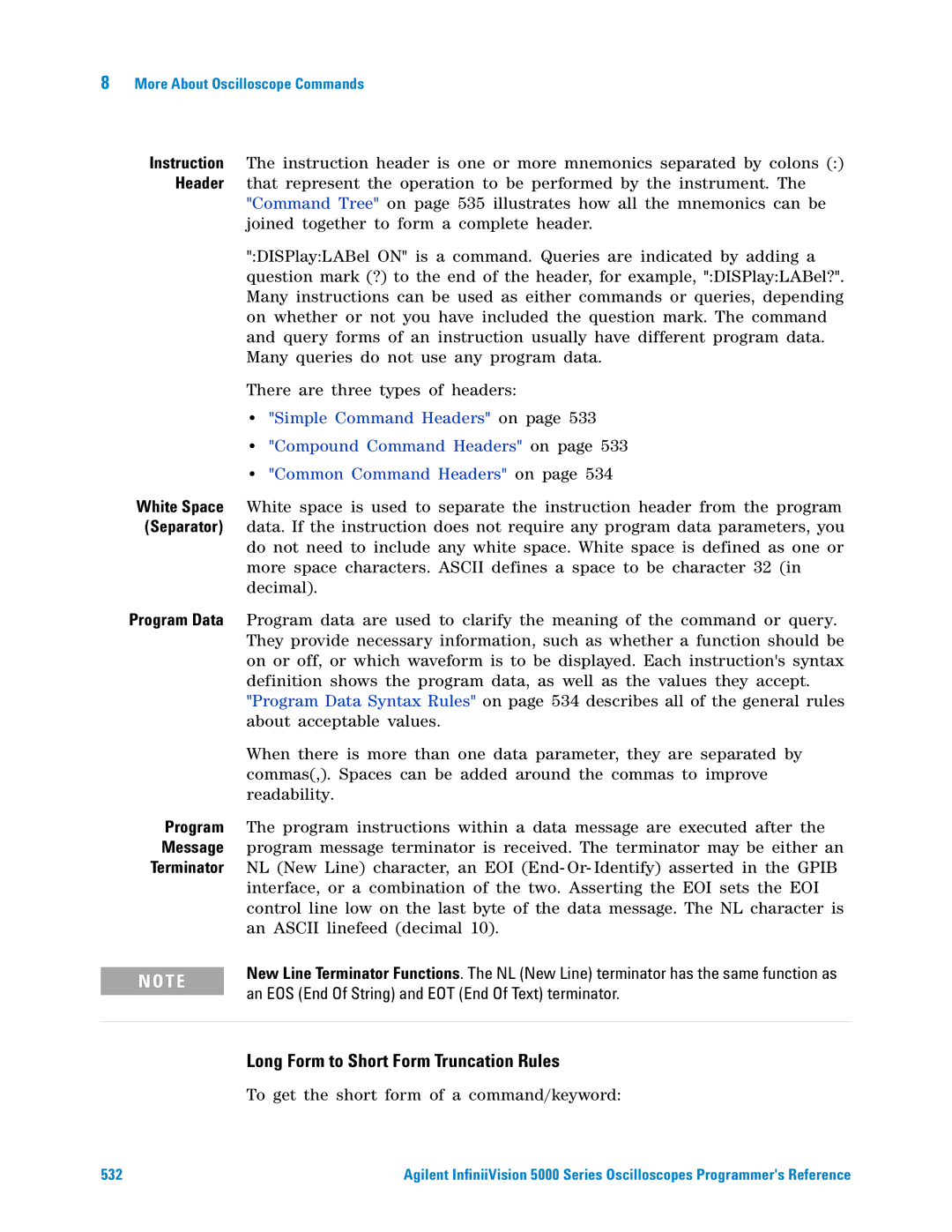8More About Oscilloscope Commands
Instruction The instruction header is one or more mnemonics separated by colons (:) Header that represent the operation to be performed by the instrument. The
"Command Tree" on page 535 illustrates how all the mnemonics can be joined together to form a complete header.
":DISPlay:LABel ON" is a command. Queries are indicated by adding a question mark (?) to the end of the header, for example, ":DISPlay:LABel?". Many instructions can be used as either commands or queries, depending on whether or not you have included the question mark. The command and query forms of an instruction usually have different program data. Many queries do not use any program data.
There are three types of headers:
•"Simple Command Headers" on page 533
•"Compound Command Headers" on page 533
•"Common Command Headers" on page 534
White Space White space is used to separate the instruction header from the program (Separator) data. If the instruction does not require any program data parameters, you do not need to include any white space. White space is defined as one or
more space characters. ASCII defines a space to be character 32 (in decimal).
Program Data Program data are used to clarify the meaning of the command or query. They provide necessary information, such as whether a function should be on or off, or which waveform is to be displayed. Each instruction's syntax definition shows the program data, as well as the values they accept.
"Program Data Syntax Rules" on page 534 describes all of the general rules about acceptable values.
When there is more than one data parameter, they are separated by commas(,). Spaces can be added around the commas to improve readability.
Program The program instructions within a data message are executed after the Message program message terminator is received. The terminator may be either an Terminator NL (New Line) character, an EOI (End- Or- Identify) asserted in the GPIB
interface, or a combination of the two. Asserting the EOI sets the EOI control line low on the last byte of the data message. The NL character is an ASCII linefeed (decimal 10).
NOTE | New Line Terminator Functions. The NL (New Line) terminator has the same function as | |
an EOS (End Of String) and EOT (End Of Text) terminator. | ||
|
Long Form to Short Form Truncation Rules
To get the short form of a command/keyword:
532 | Agilent InfiniiVision 5000 Series Oscilloscopes Programmer's Reference |
